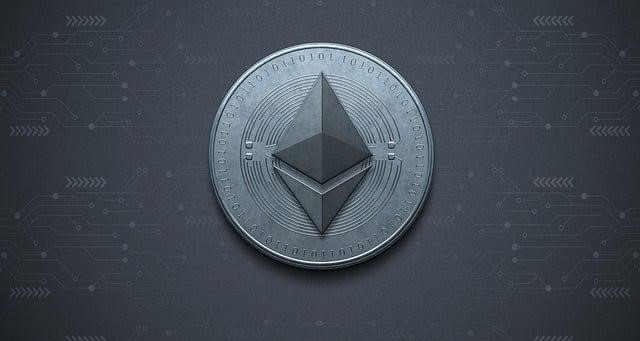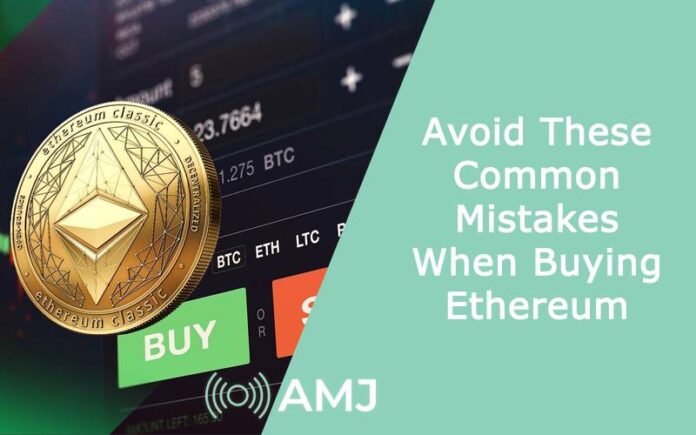
Buying Ethereum for the first time can seem intimidating because the concept of cryptocurrency itself is complex. Still, if you’re willing to put in the time and effort to learn the basics, buying Ethereum can be easy. Ethereum is one of the most liquid cryptocurrencies, so you can immediately exchange it; there’s a range of coins to pick from. Mistakes are naturally common, especially if you’re not familiar with how to buy Ethereum. For this reason, we’ve gathered some examples of the most common mistakes made when buying Ethereum, with best practices for how to avoid them.
Contents
Not Buying Through a Trustworthy Crypto Exchange
Crypto exchanges provide a fairly easy way to convert cash into Ethereum and the other way around. Different platforms aren’t synchronized, which means their prices are independent. Take the time to find the crypto exchange that best fits your needs and preferences. There’s no rush. The question now is: How are you supposed to make a decision when you’re stuck between so many options? Before deciding on a platform, it’s important to take into account the following:
- User-friendliness and simplicity
- A wide array of cryptocurrencies
- Security
- Educational content
- Good customer service
- Useful trading features (analytics, push notifications, accessibility, etc.)
Before committing to a crypto exchange, research and compare your options. Fake and unregulated platforms lure in unsuspecting victims by posing as legitimate exchanges. If you make an investment, you’ll be required to pay a high fee and pressured to invest more. Needless to say, if you attempt to withdraw your funds, you’ll come across numerous obstacles or discover your money has disappeared altogether.
Not Studying Ethereum Enough
Prior to committing your hard-earned money to Ethereum, learn a little bit about it. Ethereum isn’t just a cryptocurrency; it’s an open-source platform aimed at smart contracts and decentralized applications. You don’t need to be an expert in Ethereum, but it pays to understand how it works and what makes it stand out from the rest. A smart contract is a collection of code and data deployed using cryptographically signed transactions on the blockchain network. Decentralized applications are powered by smart contracts.
Ethereum has a relatively low volatility, which is evident in the frequency and magnitude of its price movements. The analysis of Ethereum volatility matters in terms of investment and portfolio diversification, so monitor historical, implied, and realized volatility to get a sense of how the crypto market will behave in the future and adjust your strategies accordingly. Ethereum’s proof-of-stake model shifts value creation from miners to stakeholders who vote on blocks. Each stakeholder receives a percentage of votes based on the stake of Ethereum they’ve invested.
Not Having a Wallet
Before you can buy Ethereum, you need to have a wallet to manage your balance. To authorize and validate transactions on the blockchain, the wallet creates a combination of private and public keys – together, they encrypt and decrypt data that resides or moves within the network. There’s no tangible Ethereum, meaning the wallet doesn’t technically store your crypto funds. Your Ethereum lives on the blockchain, and it can only be accessed using the private key. Your wallet, whether it’s software- or hardware-based, is a gateway to the blockchain. It’s simply a tool to view and control those digital assets.
All Ethereum wallets provide a high level of security, but inadequate security practices on your behalf can lead to a complete loss of funds. An externally owned account is the most pervasive type of Ethereum account, having an address that’s managed by a private key. You’re free to create as many accounts as you like. The best way to increase the security of your wallet is to enable two-factor authentication, which grants access only after two acceptable forms of identification have been provided: your password and text with code or biometrics.
Not Being Prepared to Verify Your Identity
Crypto exchanges embrace robust identity verification methods because complying with regulations is a chief priority. Uploading a copy of your ID and a photo of yourself is no longer enough. When opening an account, making a high-value trade, or transferring your crypto holdings elsewhere, you’ll be asked to provide proof of identity. More often than not, the best document to use is your passport, but if you don’t have one, you can use your driver’s license. Identity verification is a case-by-case process, meaning it can take anywhere from a couple of hours to a few business days.
Not Sticking to Your Game Plan
If you’re like everyone else, you don’t want to miss out on the next opportunity. You’re susceptible to the fear of missing out, so you buy when Ethereum prices are high, only to see your portfolio plummet shortly thereafter. If you act based on your emotions, you fall victim to a phenomenon that’s become a huge problem – FOMO. It’s been integral to driving crypto bubbles and bull runs over the past few years, causing significant market fluctuations. Social media is the source of FOMO, making it more powerful and influential than ever before.
FOMO in the crypto world occurs when you sell Ethereum too early, buy even if prices are high, or invest in a project surrounded by hype and big promises. You try to imitate the success of your friends or fellow traders, which can always backfire. So, how can you ease the negative effects? Do your own research to understand Ethereum’s situation and know whether you should buy or sell; the extra details will help you make sound investment decisions. Equally important is to have a guiding strategy to prevent making drastic decisions.
The Takeaway
In a nutshell, don’t get caught making the same mistakes as others. Investing in Ethereum can seem mind-boggling, especially if you’re just getting started. Making mistakes doesn’t necessarily equal failure; no one is perfect. Not making any mistakes, however, means you’ll miss out on learning opportunities, so cultivate a growth mindset. You can dedicate your portfolio to Ethereum entirely or include multiple cryptocurrencies to ensure you’re not exposed to the risk of a single asset.












![Index of Money Heist [Season 1, 2, 3 & 4 – All Episodes, Cast and Plot] Index of Money Heist](https://www.asiamediajournal.com/wp-content/uploads/2021/05/Index-of-Money-Heist-3-100x70.jpg)